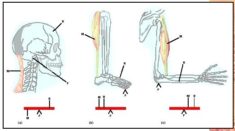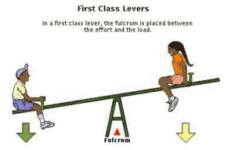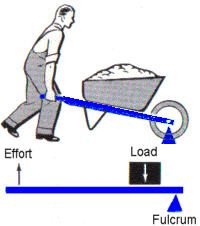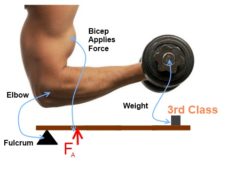Written by: Kevin Cann
Ever since day 1 of working with Boris Sheiko, technique in the squat, bench press, and deadlift have been drilled into me. According to Boris, technique is the most important aspect to consider when lifting. We saw this in person when he trained a group of 5 of us.
Out of the group of 5 there were a couple elite powerlifters. We were taking a couple doubles at 80% and a couple singles at 85%. Boris did not let them go over 95lbs for the entire squat session because their technique was flawed. 95lbs was far less than even 50% of their 1RM, not to mention 80%.
There was also a block of training in which we dropped my squat max because my technique needed work. We dropped it around 30lbs. In this cycle, on the heaviest days I barely cracked 70% of my 1RM. However, I got stronger. Improving your technique can yield many immediate benefits.
The human body was not designed to be a mechanical masterpiece when it comes to lifting things. In fact, the human body is setup at a disadvantage. We are designed to have muscles pull bones around an axis to create movement. Our bones are levers.
In physics there are three kinds of levers. There are first-class, second-class, and third-class levers. A first-class lever is when the axis (also known as a fulcrum) is located between the resistance (weight we are lifting) and the force (our muscles). An example of a first-class lever is a seesaw. The axis or fulcrum is located between each end of the seesaw.

There are very few examples of first-class levers in the human body. One example is how we hold our head up. The weight is the head, the axis is the atlantoccipital joint, and the force comes from the muscles that hold up our head that are located on the back of our necks.

A second-class lever has the resistance located between the fulcrum and the muscle force. A commonly used example of a second-class lever is a wheelbarrow. In the human body one of the only second-class levers can be found when performing a calf raise. The fulcrum in this instance is our metatarsophalangeal joints (toes), the weight is our bodyweight, and the force is coming from our gastrocnemius and soleus muscle through the Achilles tendon which inserts at our heel.

The most common type of lever found in the human body is a third-class lever. This is when the muscle force is applied between the resistance and the fulcrum. A common example of a third-class lever is the bicep curl. The muscle force is applied by our biceps muscle through the distal tendon attachment. This attachment is located closer to our hand than our elbow, which is the fulcrum. The weight would be the dumbbell in our hands. There are not too many examples of third-class levers outside of the body because they just are not that effective at moving weight.

One more definition that we need to look at when discussing technique while lifting is that of a moment arm. A moment arm is the length between the joint axis and the line of force. In the example above of the bicep curl, the length of the moment arm is the length of the forearm (technically the length from the distal tendon attachment to the dumbbell). The longer our forearm is, the harder that weight will be to lift.
Basically what this all means is that if we are curling a 25lb dumbbell, it requires more than 25lbs of muscular force to bend our elbow and perform the exercise. Compound lifts have multiple moment arms. For the sake of this example we will look at the moment arm of the hips.
The moment arm for the hips is the distance from the hip joint to the midfoot (as long as the bar is over our midfoot like it should be). A common technique flaw we see in the squat is the good morning squat. This is when the hips shoot back and the chest falls forward out of the bottom position.
In this position the bar is pushed out over the toes and the hips are pushed further away. This is about as big of a moment arm for the hips as you can get. The moment arm goes now from the hip joint, past the midfoot, to where the bar is positioned.
Remember that we are designed at a mechanical disadvantage. In a good position, we already need to use more force than there is weight on the bar to actually lift it. If our technique fails, we are placed at an even greater disadvantage. This means that we need to produce even more force than before to lift the weight.
This not only puts more pressure on our muscles to attempt to lift the weight, but it also puts more pressure on them to stabilize our joints. Once we lose that stability, we are greater risk of injury. So not only will we lift less weight, but we run the risk of getting hurt and lifting no weights.
When selecting your programs repetitions, sets, and intensity, this all needs to be taken into account. We want to train good positions and not poor ones. Leave the ego at the door and only lift what you are capable lifting in good positions. Come meet day, it also requires far less energy to lift in good positions than it does in poor ones. This can be the difference between winning and losing, or setting new personal bests.
I will leave you with what I tell my lifters all of the time, you can only beat physics for so long.

If you squat and have a slight hip shift to the right at heavier weight, what would you recommend to remedy this?
It helps to have a biomechanical understanding of the body if you are looking to get jacked. Great theory post!
Wow, great detail. I always took the complexity of human mechanics for granted. Ego is the biggest enemy to maintaining great form!
Great article!
Great explanation of body mechanics! It’s really important to understand how things work if you want to get real results!
I am a fitness lover infect crazy about fitness and health but i never followed any technique. Great tip to increase the benefit of my health and fitness efforts.
Thanks for remind us how our body works very interesting and informative post shared thanks for it.
Good workout but whenever this one comes up I never feel like I had a decent workout so I do exercise bicycle. Good abdominal workout though.